Finalists of World Press Photo of the Year 2021 are Truly Incredible
![]()
The World Press Photo Foundation has announced the nominees for its 2021 contest featuring 45 photographers from 28 countries. Though all the work is incredibly impressive, six of the moving photos are in the running for World Press Photo of the Year.
The image above is one of the finalists, and more information about the photographer and the story can be found below.
The World Press Photo Contest seeks to recognize the best visual journalism of the last year and rewards images and stories in eight categories. This year, 4,315 photographers from 130 countries have entered 74,470 images. This is an increase from 2020, when 4,282 photographers from 125 countries entered 73,996 images.
Due to the COVID-19 pandemic, the judging of the 2021 Photo Contest took place entirely online and involved seven specialized juries and a general jury over several rounds during a six-week period.
The General Jury comprised jury chair NayanTara Gurung Kakshapati, co-founder and director of photo.circle; Ahmed Najm, managing director of Metrography Agency; Andrei Polikanov, visual director, Takie Dela; Kathy Moran, deputy director of Photography at National Geographic; Kevin WY Lee, photographer and creative director; Mulugeta Ayene, photographer; and Pilar Olivares, photographer at Reuters.
Below are the six nominees for World Press Photo of the Year along with the stories behind each.
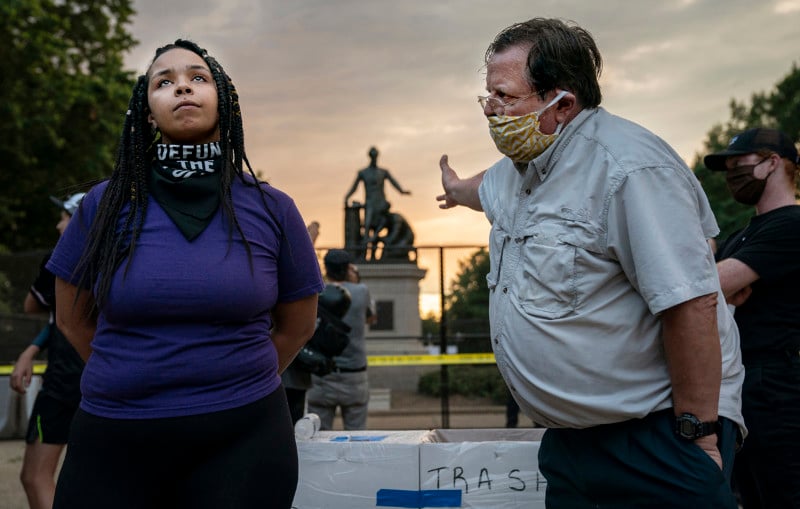
The Emancipation Memorial shows Lincoln holding the Emancipation Proclamation in one hand, with his other hand over the head of a Black man in a loincloth, kneeling at his feet. Critics argue that the statue is paternalistic, demeaning in its depiction of Black Americans, and that it doesn’t do justice to the role that Black people played in their own liberation. Those against removal say it is a positive depiction of people being freed from the shackles of slavery, and that removing such monuments can amount to an erasing of history. The drive to remove the statue came amid a wave of calls to take down monuments of Confederate generals nationwide, a move largely welcomed by activists from the Black Lives Matter (BLM) movement, who see Confederate and other such monuments as reminders of an oppressive history. They call for a more honest accounting of American history. Officials had erected barriers around the Emancipation Memorial in advance of demonstrations. Residents posted notes on the fence expressing their views, and on 25 June around 100 people gathered at the monument arguing about what it meant. In February 2021, congresswoman Eleanor Holmes Norton reintroduced a bill in the US Congress to have the statue removed and taken to a museum.
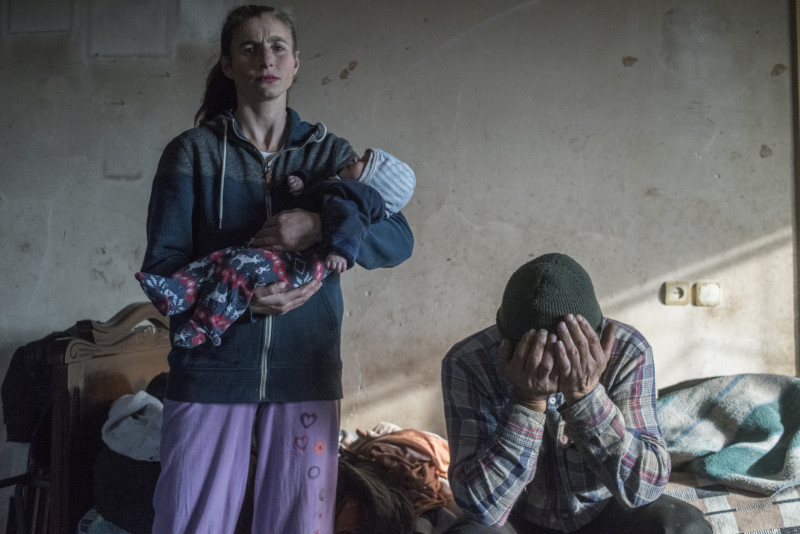
Conflict between Azerbaijan and Armenia over the disputed region of Nagorno-Karabakh resumed in September, after a lull of 30 years. When the Soviet Union was crumbling at the end of the 1980s, ethnic Armenians in Nagorno-Karabakh, part of Azerbaijan, took advantage of the power vacuum and voted to join Armenia. Fighting intensified after the Soviet Union finally dissolved in 1991, and continued until a ceasefire in 1994. More than 20,000 people died and a million people had to leave their homes. Victorious Armenians declared an independent state, driving around 800,000 Azerbaijanis into exile. In the intervening 30 years, little has been done to resolve the status of Nagorno-Karabakh and there have been periodic military clashes between the two sides. A July 2020 border clash triggered massive protests in Azerbaijan’s capital, Baku, with thousands of demonstrators calling for the country to go to war with Armenia. Renewed hostilities, which each side blames the other for starting, began on 27 September in what became known as the Second Nagorno-Karabakh War. Conflict continued until 9 November, the worst fighting the area had seen since the 1990s. In a settlement brokered by Russia, Azerbaijan regained possession of territory lost in the 1990s, but the regional capital, Stepanakert, was left under Armenian control. Although fighting is over, reconciliation will prove difficult both to Armenians who feel they have lost their homeland, and to Azerbaijanis returning to a region ravaged by war.
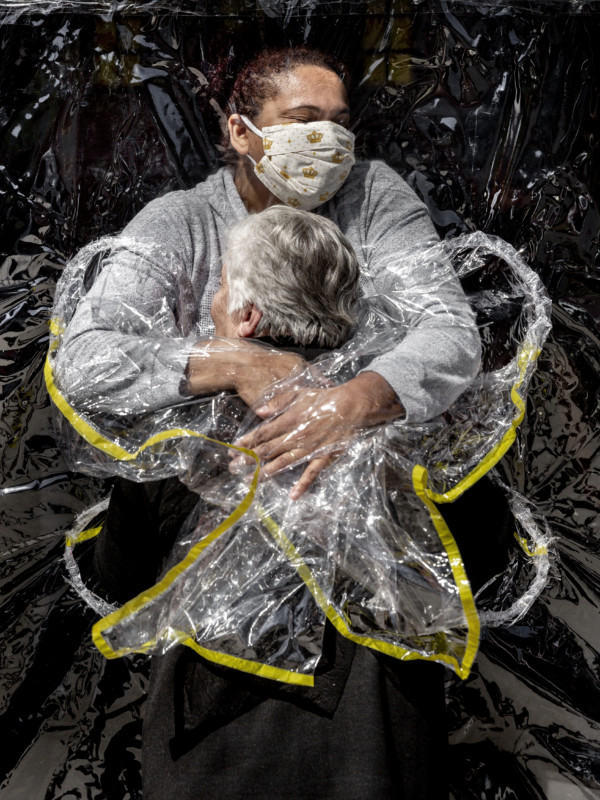
This was the first hug Rosa had received in five months. In March, care homes across the country had closed their doors to all visitors as a result of the COVID-19 pandemic, preventing millions of Brazilians from visiting their elderly relatives. Carers were ordered to keep physical contact with the vulnerable to an absolute minimum. At Viva Bem, a simple invention, ‘The Hug Curtain’, allowed people to hug each other once again. The new coronavirus had first appeared in Wuhan, China, at the end of 2019, and by January 2020 had begun to spread around the world. On 11 March, the World Health Organisation declared the COVID-19 outbreak a pandemic. The disease—transmitted mainly via close contact, respiratory droplets, and aerosols—could be fatal, and people over the age of 70 were one of the groups considered most vulnerable to the disease. Brazilian president, Jair Bolsonaro, dismissed claims about the severity of the pandemic and the danger posed by the virus, undermined quarantine measures adopted at state level, and encouraged Brazilians to continue working to keep the economy afloat. Brazil ended 2020 with one of the worst records globally in dealing with the virus, with some 7.7 million reported cases and 195,000 deaths.
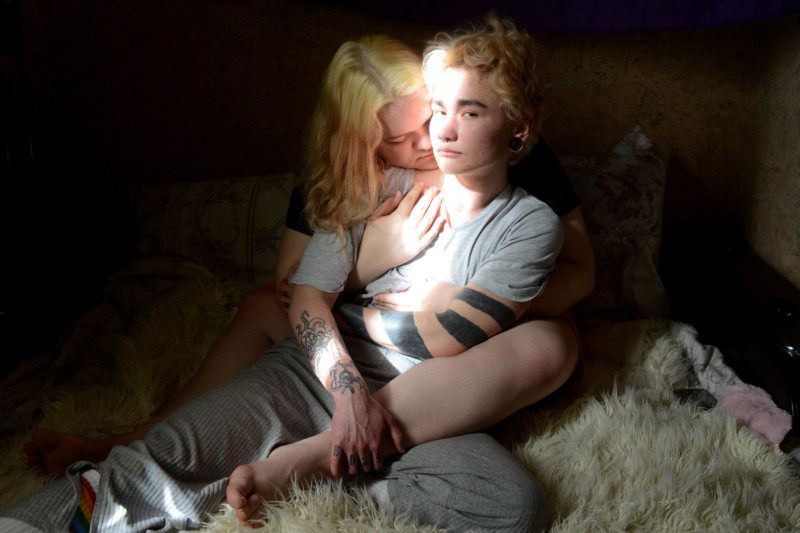
Ignat was bullied throughout his school years, and confronted by the school psychologist following rumors that he spoke about himself using the masculine gender. Ignat opened up to the psychologist about his gender identity—the first stranger to whom he had told everything—but asked to keep it a secret. The whole school found out, and the insults and humiliations became permanent. Many LGBTQ+ people in Russia keep low profiles because of stigmatization against nontraditional sexuality. An amendment to the Russian constitution, made in July 2020, stipulates that marriage is a union between a man and a woman, with no other options possible. Although an attempt was made to make a further amendment preventing transgender people from changing their status on legal documents, it was not passed. Transgender people can marry, but the road there is difficult. Transgender people also face very specific challenges when accessing their economic, social, and cultural rights, as their gender is not legally recognized. This results in transgender people having no access to transition-related healthcare services, or offical support against discrimination.
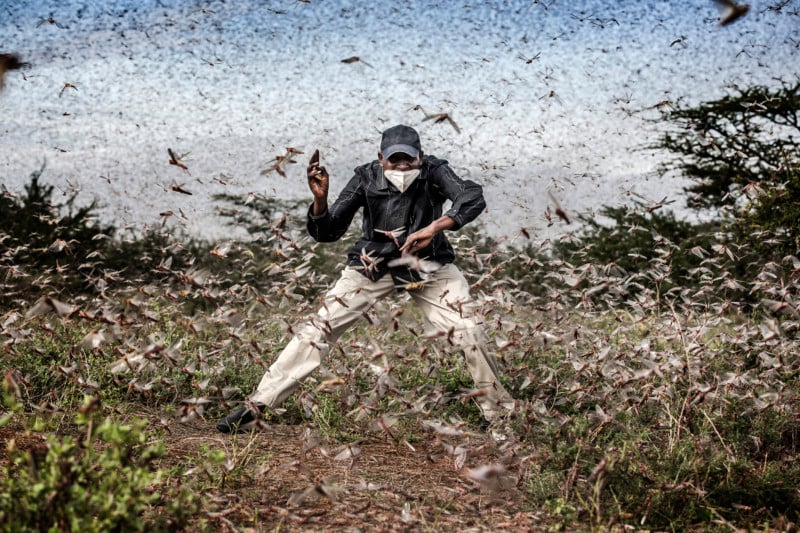
In early 2020, Kenya experienced its worst infestation of desert locusts in 70 years. Swarms of locusts from the Arabian Peninsula had migrated into Ethiopia and Somalia in the summer of 2019. Continued successful breeding, together with heavy autumn rains and a rare late-season cyclone in December 2019, triggered another reproductive spasm. The locusts multiplied and invaded new areas in search of food, arriving in Kenya and spreading through other countries in eastern Africa. Desert locusts, Schistocerca gregaria, are potentially the most destructive of the locust pests, as swarms can fly rapidly across great distances, traveling up to 150 kilometers a day. A single swarm can contain between 40 and 80 million locusts per square kilometer. Each locust can eat its weight in plants each day: a swarm the size of Paris could eat the same amount of food in one day as half the population of France. Locusts produce two to five generations a year, depending on environmental conditions. In dry spells, they crowd together on remaining patches of land. Prolonged wet weather—producing moist soil for egg-laying, and abundant food— encourages breeding and producing large swarms that travel in search of food, devastating farmland. Even before this outbreak, nearly 20 million people faced high levels of food insecurity across the East African region, challenged by periodic droughts and floods. COVID-19 restrictions in the region slowed efforts to fight the infestation as supply chains of pesticides were disrupted.
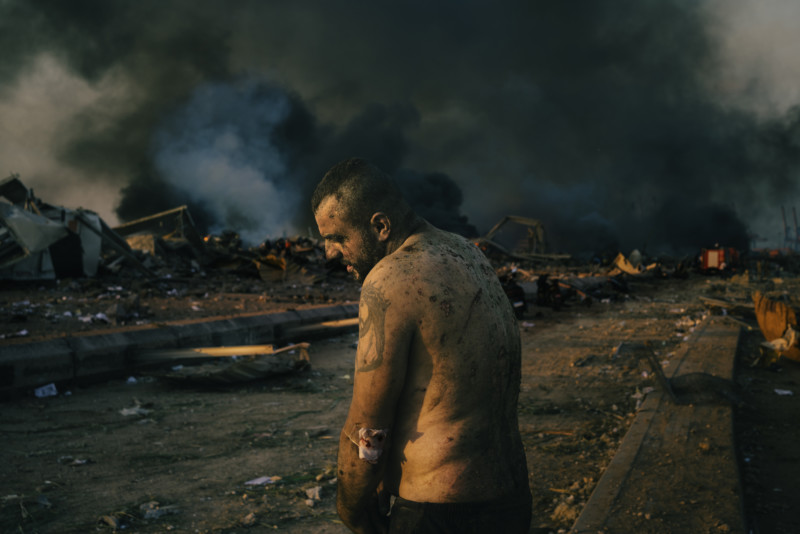
At around 6pm on 4 August, a massive explosion, caused by more than 2,750 tons of high density ammonium nitrate, shook Lebanon’s capital Beirut. The explosive compound was being stored in a warehouse in the port. Some 100,000 people lived within a kilometer of the warehouse. The explosion, which measured 3.3 on the Richter scale, damaged or destroyed around 6,000 buildings, killed at least 190 people, injured a further 6,000, and displaced as many as 300,000. The ammonium nitrate came from a ship that had been impounded in 2012 for failing to pay docking fees and other charges, and apparently abandoned by its owner. Customs officials wrote to the Lebanese courts at least six times between 2014 and 2017, asking how to dispose of the explosive. In the meantime, it was stored in the warehouse in an inappropriate climate. It is not clear what detonated the explosion, but contamination by other substances, either while in transport or in storage, appear the most likely cause. Many citizens saw the incident as symptomatic of the ongoing problems the country is facing, namely governmental failure, mishandling and corruption. In the days after the blast, tens of thousands of demonstrators filled the streets of central Beirut, some clashing with security forces and taking over government buildings, in protest against a political system they saw as unwilling to fix the country’s problems.
The remaining nominees for each of the eight categories can be seen at the World Press Photo website. The winners are set to be announced on April 15. The World Press Photo of the Year award carries a cash prize of 5,000 euros, and the nominees in each category are published in World Press Photo’s online collection and promoted on World Press Photo’s platforms. They are also included in the annual World Press Photo Exhibition tour and featured in the World Press Photo yearbook. In addition, nominees are invited to the World Press Photo Festival 2021 (which will take place online in April 2021).
Image credits: Header image copyright Luis Tato, Spain, for The Washington Post. All other image copyrights individually noted and provided courtesy of the World Press Photo of the Year.